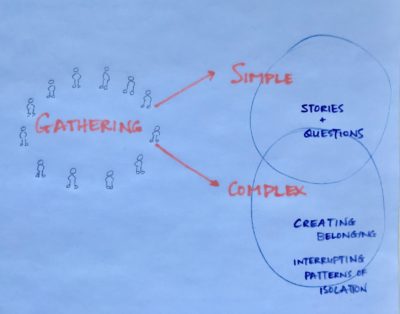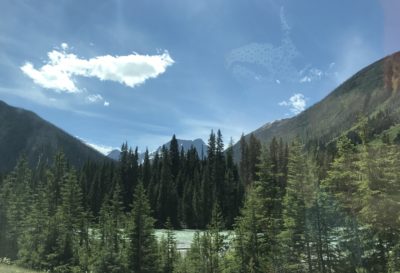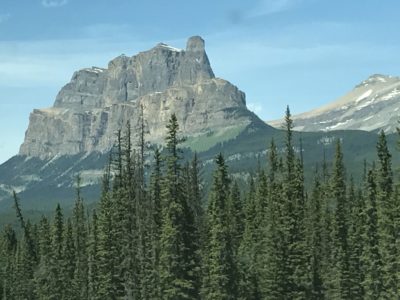
I’m in a rather impromptu conversation with three people. Quanita Roberson, co-host and co-convenor with me of our upcoming Fire & Water Leadership Cohort — she knows stuff, lots of it. And Brad Wise and Joey Taylor of BeSpokenLive — each of the handful of times I’ve been with these two I feel deeply inspired. I think of all of us as colleagues and friends, friends and colleagues — frolleagues.
The conversation is about submitting a grant application to hold a series of community connection gatherings. They are about convening diversity. They are about creating connection. They are about learning. They are about being together. This is a think out loud time. I’m just offering a few thoughts to weave into what they are already thinking and will carry forward.
In the impromptuness of it, I get an intuitive hit that rises from my belly. I love that feeling. I know these people well enough to say it out loud without needing to wordsmith it. It’s good when people can be imperfect together. Or rather, without fear of not having it all figured out.
I offered this:
- The work (including gatherings like this) is simultaneously about the simple and the complex.
- The simple part is bringing participants into questions and stories with one another. It just works a pile better to connect people in what they care about through their personal experience.
- The complex part is, as Joey named, creating belonging (a fair hunk of this comes from a container in which to share stories / experiences).
- The complex part is also about interrupting patterns of isolation (or reactive posturing, or polarized defensiveness).
- The gatherings will come alive with a spirit of celebration, of possibility, of recalling childhood stories.
- The magic and the complex grows from the simple.
Quanita framed it really well. Thinking of the people that might come to such a gathering, and the community restoring that can so powerfully occur, she said, “We meet ourselves by meeting each other.”
Yah, that’s good, right. We think we are just meeting each other, which is rather monumental in itself. And in so doing, we are coming to meet more of ourselves. With aha. With tenderness. Sometimes with fire. With kindness. With clarity that only comes from connection.
Well, it was only an impromptu meeting and invitation to offer some perspective. I kind of felt like in meeting each other (just a regular old Monday) that I met more of myself.
Glad for insights. And friends. And colleagues. And frolleagues on a Monday. Thinking about gathering people that aren’t used to gathering.





